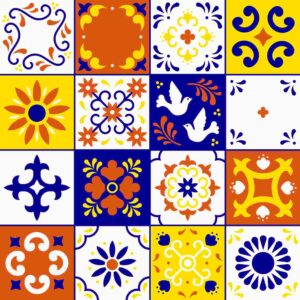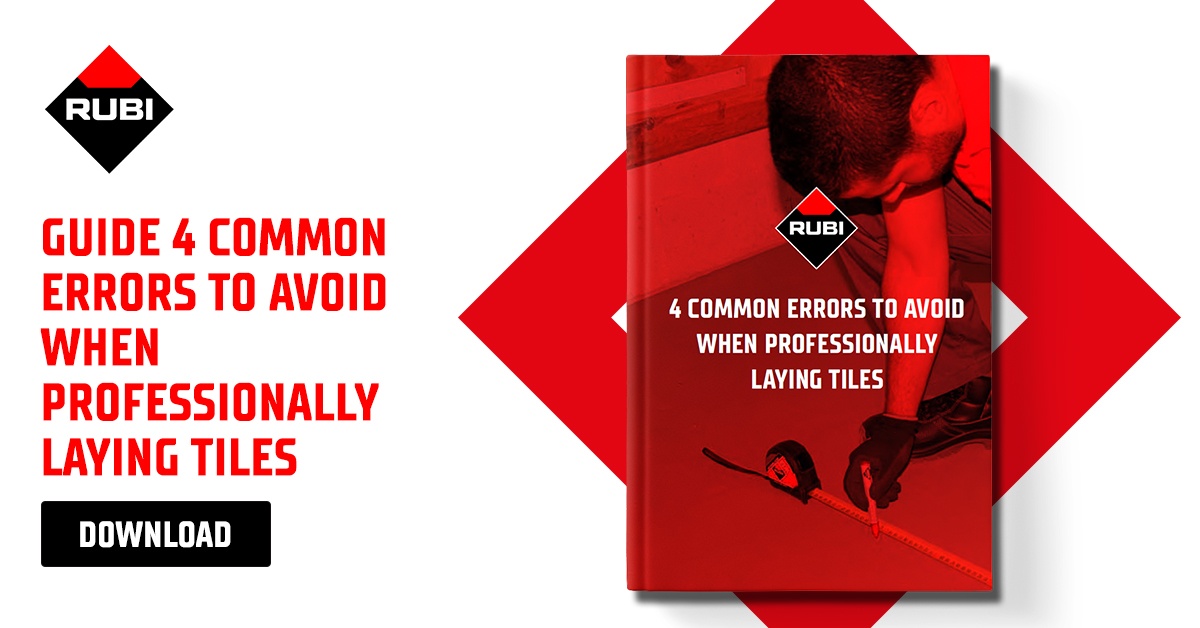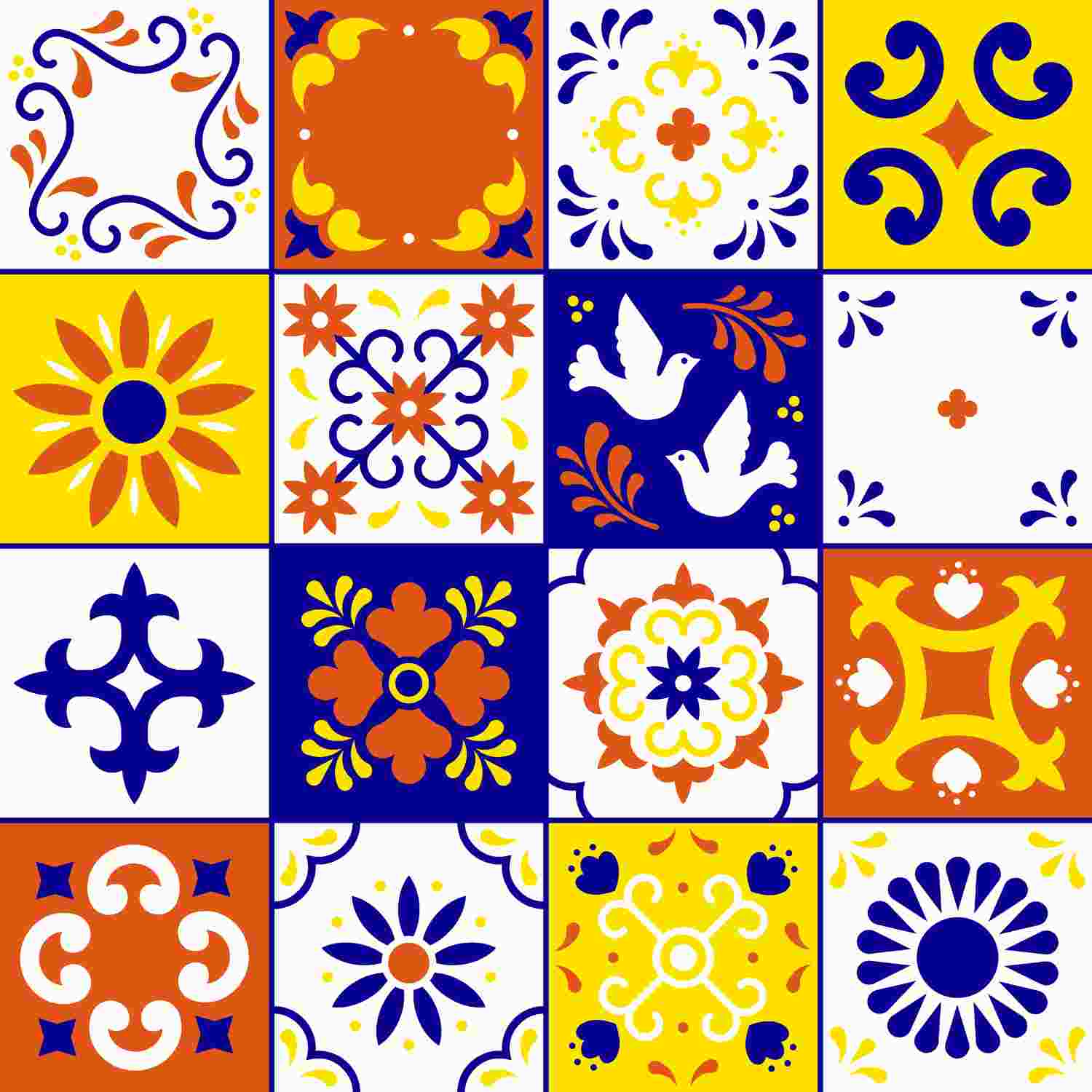Talavera tiles are a timeless decorative element. Each one wonderfully blends history, artistry, and craftsmanship. Whether you’re considering colorful kitchen tiles, decorative wall tiles, or even artisan floor tiles, Talavera tiles offer an artistic and cultural touch to any space. These handmade ceramic tiles are perfect for creating a statement.
Are you considering traditional Talavera tiles for a kitchen backsplash or decorative wall tiles to enhance your living space? Either way, understanding their characteristics, installation, and maintenance will help you get the best results. With the right RUBI tools, your project can come together seamlessly, providing an easy and efficient installation process.
Read on so we can provide you with the knowledge needed to select, install, and care for handcrafted ceramic tiles.


Appreciating the Art and Origins of Talavera Tiles
Talavera tiles have a long and rich history dating back to the 16th century. It was when Spanish artisans introduced ceramic tile-making techniques to Mexico.
The craft flourished in Puebla, where local artisans combined Spanish and indigenous influences. Doing this created the colorful and intricate designs that define Talavera tiles today.
Over the centuries, these handcrafted ceramic tiles have become a symbol of Mexican artistry, widely used in homes, churches, and public spaces.
What makes Talavera tiles so unique is their hand-painted nature and vibrant color palette. Each tile is crafted as an individual piece. Doing this results in subtle variations that add to their charm.
Their designs often feature the following:
- Floral motifs
- Geometric patterns
- Moorish-inspired elements
Altogether, it makes them a striking choice for colorful kitchen tiles, decorative wall tiles, and artisan floor tiles. Whether used for a small accent or an entire surface, these tiles bring warmth and character to any space.
Looking Into the Material Composition and Characteristics
Talavera tiles are made from natural terracotta clay, which is shaped and dried before being coated with a white base glaze. Artisans then hand-paint each tile with intricate designs using mineral-based pigments before firing them in a kiln. It’s a traditional process that gives the tiles their vibrant, long-lasting colors and slightly textured surface.
Because of their handcrafted nature, Talavera tiles often have slight imperfections that distinguish them from mass-produced alternatives. They have variations in:
- Size
- Thickness
- Glaze application
As such, this contributes to their authenticity and rustic appeal. However, it’s essential to consider these characteristics when planning an installation, as they require careful handling.
Also, Talavera tiles are porous, meaning they must be sealed the right way to protect against moisture and stains. It’s true that they are durable. Despite this, they’re best suited for decorative wall applications and low-traffic flooring rather than high-impact areas.

Paying Attention to Installation Techniques and Challenges
Installing Talavera tiles requires attention to detail and patience due to their handmade nature. Their slight variations in size and thickness can make uniform spacing challenging. Still, with the right approach, a seamless and beautiful finish is achievable.
The first step in installation is planning the layout. Doing this ensures that patterns align correctly and color distribution is balanced.
Remember, each tile is unique. As such, arranging them before installation can help create a more harmonious look.
Choosing the right adhesive is crucial for securing Talavera tiles. A high-quality tile adhesive, such as thin-set mortar, works best for ceramic surfaces.
Since these tiles aren’t perfectly uniform, tile spacers can help maintain consistent gaps between them. Once the tiles are set, grouting should be done with care. Doing this ensures that excess grout is wiped away before it hardens.
Sealing the tiles is an essential step. Doing this helps protect them from:
- Moisture
- Stains
- Wear over time
Given the intricacies of installation, the tools from Rubi can save time. It also ensures the best results.
The Relationship of Maintenance and Longevity
Proper maintenance is the secret to upholding the beauty and durability of Talavera tiles. Since these tiles are often used in kitchens, bathrooms, and outdoor areas, regular cleaning is necessary. Doing this can keep them looking their best.
The best cleaning method involves using a soft cloth or sponge along with a mix of some mild soap and water.High-grade chemicals and abrasive scrubbers should be avoided at all costs. It’s because they can damage the glaze and dull the colors.
In addition to cleaning, periodic resealing is recommended to protect Talavera tiles from moisture and stains. Doing this is especially important in areas with high humidity, such as bathrooms and patios.
Has the tile become chipped or cracked? If so, it can often be repaired using ceramic paint that matches the original color.
Still, for more severe damage, replacing the tile is the best option. With proper care, Talavera tiles can last for decades, retaining their vibrant colors and artistic appeal.
Creative Ways to Use Talavera Tiles in Your Home
Talavera tiles are incredibly versatile and can be used in so many different and creative ways to enhance your home’s interior and exterior. Their bold colors and intricate patterns make them ideal for accent pieces as well as full-scale designs.
One of the most popular applications is using colorful kitchen tiles to create a stunning backsplash. The vibrant hues and hand-painted designs can bring warmth and charm to any kitchen.
Beyond the kitchen, Talavera tiles make excellent decorative wall tiles in the following places:
- Bathrooms
- Entryways
- Stair risers
Their unique aesthetic can turn a simple wall into a captivating focal point. For outdoor spaces, artisan floor tiles can be used to create a picturesque patio or courtyard. Such tiles work particularly well around:
- Fountains
- Garden pathways
- Poolside areas
Another creative way to incorporate Talavera tiles is by using them for furniture accents. Tiled tabletops, fireplaces, and even headboards can showcase their artistry. Whether used in small details or large-scale designs, Talavera tiles bring a sense of craftsmanship and cultural richness to any space.
It’s Time to Enjoy the Beauty of Talavera Tiles
With Talavera tiles, you can make a bold and beautiful statement anywhere in your home. The secret is to have the right tools to install them the proper way.
You can count on the high-quality tools provided by Rubi. From tile saws and drill bits to mixers and beyond, you can level up your craftmanship.
Customers appreciate our fast delivery and commitment to utmost excellence. Don’t wait to ask Rubi any questions about our products.



Post a comment